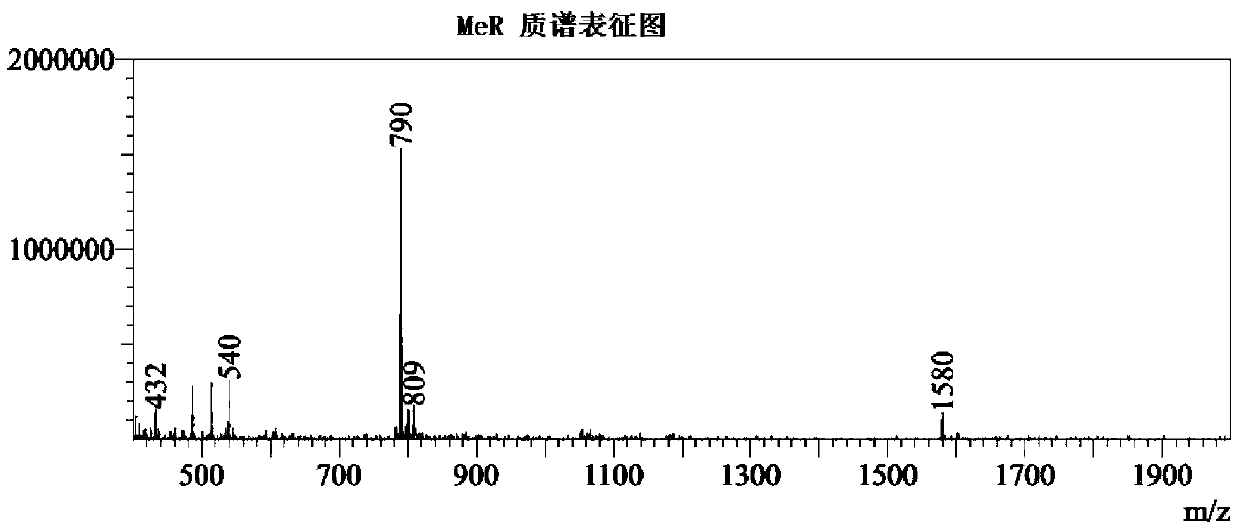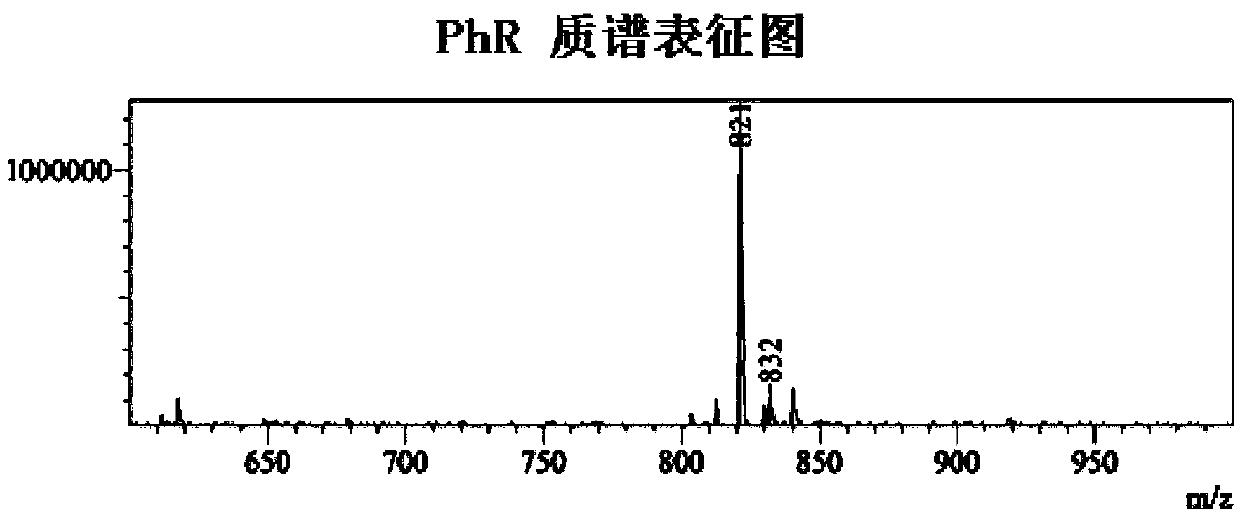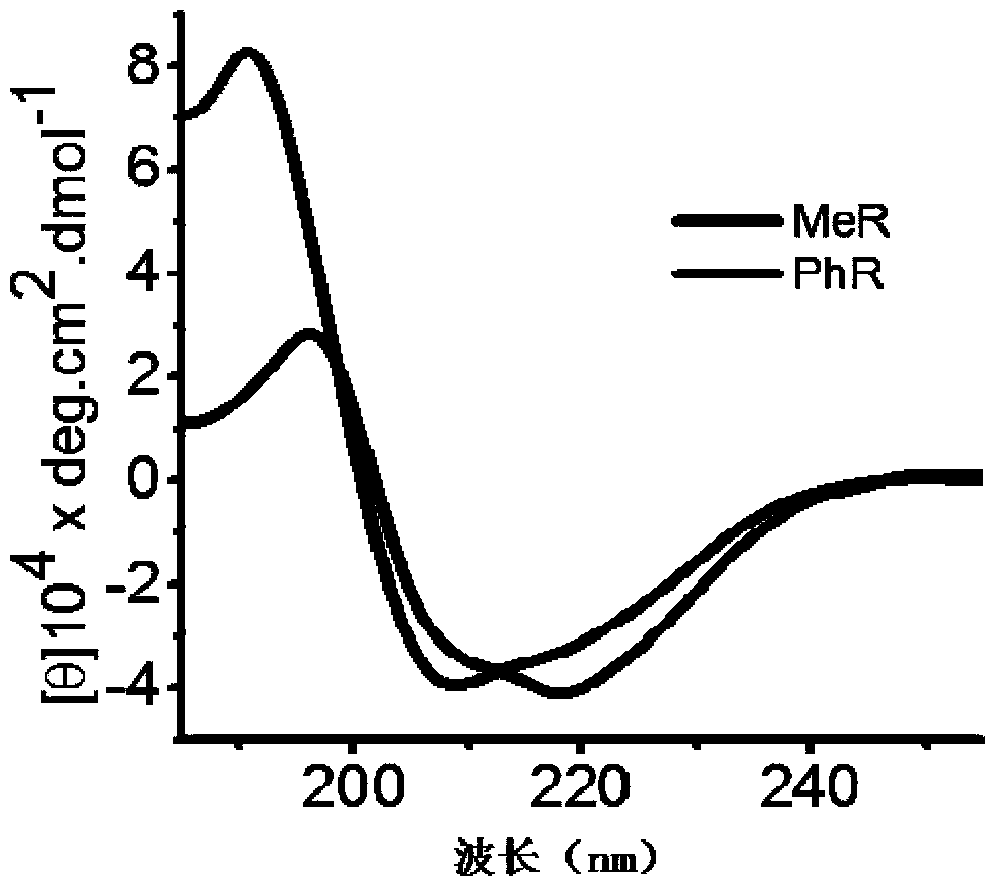A kind of α-helical polypeptide and use thereof
A helical and multipurpose technology, applied in the direction of peptides, peptide/protein components, medical preparations containing active ingredients, etc., can solve the problem of poor anti-tumor effect and achieve the effect of inhibiting tumor growth
- Summary
- Abstract
- Description
- Claims
- Application Information
AI Technical Summary
Problems solved by technology
Method used
Image
Examples
Embodiment 1
[0046] MeR, PhR are dual inhibitors of MDM2 and MDMX and exhibit nuclear accumulation
[0047]According to the phage display technology, the MDM2 / MDMX dual inhibitor polypeptide PDI sequence LTFEHYWAQLTS was discovered, and based on the consideration of the membrane penetration of the polypeptide, the 4th E in the sequence was mutated to Q (PDI-1), thus simulating a series of template design The stable α-helical peptide sequence of p53. Considering that the side chain structure of the polypeptide often affects the hydrophobic pocket of MDM2 / MDMX binding, and keeping the amino acid of the action site unchanged, a series of i, i+4 stable conformation α-helical polypeptides (PDI 2-12) were designed and synthesized. Such as side chain construction at different positions, substitution of different side chain substituent structures (Me or Ph) at chiral positions, and amino acid mutations at different specific positions.
[0048] Preparation and separation and purification steps of ...
Embodiment 2
[0065] MeR, PhR activate p53 signaling in cancer cells
[0066] Inhibiting the combination of p53 protein and its negative regulatory proteins MDM2 and MDMX is the way to stabilize and activate p53 protein. Activation of the p53 pathway occurs only in cells expressing wild-type p53 protein, but not in cells with mutant forms of p53. In order to evaluate the activity of MeR and PhR synthesized in the above Example 1, two cancer cell lines overexpressing MDM2 (PA-1 ovarian teratoma) or MDMX (MCF-7 breast cancer) were selected as representatives. Meanwhile, two mutant p53 cell lines (SKOV3 and MDA-231) were selected to exclude the non-specific toxicity of MeR and PhR. And two normal cell lines (HEK293 and QSG7701), and take the same peptide treatment to exclude cytotoxicity. IC was detected by cell survival assay 50 , nutlin-3a was selected as a positive control.
[0067] Cell viability was determined by MTT assay (3-(4,5-dimethylthiazol-2-yl)-2,5-diphenylt-etrazolium bromide...
Embodiment 3
[0073] Reactivation of partial p53 cellular functions in tumor cells overexpressing MDM2 / MDMX
[0074] 1. The effect of CIH polypeptide on apoptosis
[0075]The tumor suppressor gene p53 has many cellular functions, the most important of which is the induction of apoptosis and cell cycle arrest. PA-1 and MCF-7 cells were treated with CIH polypeptide (40 μM) or nutlin-3a (5 μM) for 48 h, and Annexin-V / PI assay (BDPharmingenTM) was used to quantify the apoptotic effects of MeR and PhR. Cells were harvested, washed twice with cold PBS, and suspended in buffer. During the process of cell apoptosis, FITC was marked on the combination of Annexin-V and phosphatidylserine (PS), and the nuclei were stained with propidium iodide (PI). Stained cells were analyzed by flow cytometry to differentiate apoptotic cells. Cells with both FITC and PI fluorescence signal intensities represent apoptotic cell counts. Whereas the degree of apoptosis is measured by exposing cells to caspase-3 spec...
PUM
 Login to View More
Login to View More Abstract
Description
Claims
Application Information
 Login to View More
Login to View More - R&D
- Intellectual Property
- Life Sciences
- Materials
- Tech Scout
- Unparalleled Data Quality
- Higher Quality Content
- 60% Fewer Hallucinations
Browse by: Latest US Patents, China's latest patents, Technical Efficacy Thesaurus, Application Domain, Technology Topic, Popular Technical Reports.
© 2025 PatSnap. All rights reserved.Legal|Privacy policy|Modern Slavery Act Transparency Statement|Sitemap|About US| Contact US: help@patsnap.com



